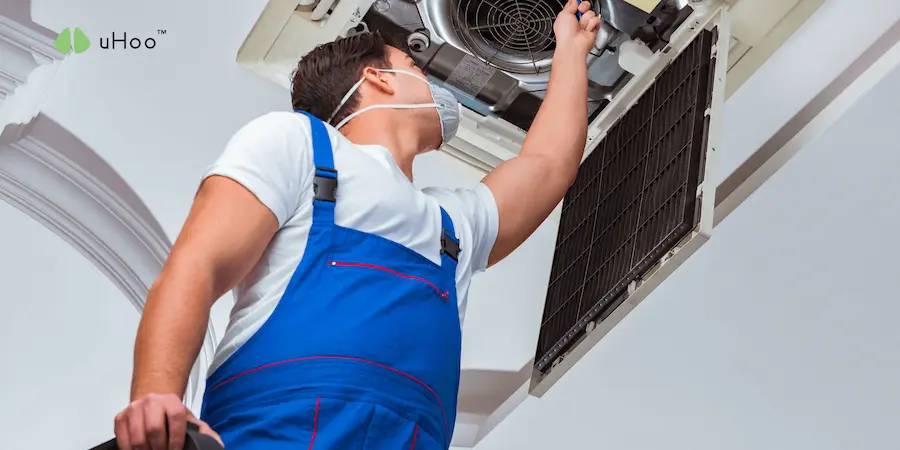In today’s fast-paced business environment, ensuring a safe and healthy workspace is paramount. Beyond visible hazards, air quality monitors play a crucial role in detecting unseen dangers: hidden leaks. These leaks, whether from HVAC systems, plumbing, or even subtle chemical emissions, can significantly compromise indoor air quality, leading to health issues for employees, reduced productivity, and potential regulatory fines.
Traditional leak detection methods often rely on visual inspection, olfactory cues, or rudimentary tools, which are frequently insufficient for identifying insidious, slow-developing problems. This is where advanced air quality monitoring comes into its own, transforming reactive responses into proactive prevention.
Modern air quality monitors like uHoo provide continuous, real-time data on various environmental parameters. This includes volatile organic compounds (VOCs), particulate matter (PM2.5 and PM10), carbon dioxide (CO2), carbon monoxide (CO), ozone (O3), temperature, and humidity.
Each of these metrics can be a tell-tale sign of a hidden leak. For instance, a sudden and sustained increase in VOC levels might indicate a leak from cleaning supplies, building materials, or even new furniture off-gassing. Elevated humidity could point to a water leak in walls or ceilings, fostering mold growth that subsequently releases spores and VOCs into the air. Similarly, an unexplained rise in CO2 could signal issues with ventilation systems, potentially allowing outdoor pollutants or combustion byproducts to seep in.
Implementing a comprehensive air quality monitoring strategy involves strategic placement of sensors throughout the commercial premises. Critical areas include offices, production floors, storage facilities, server rooms, and common areas. By establishing baseline air quality levels during normal operations, businesses can quickly identify deviations that suggest a problem.
Many advanced monitors come with integrated analytics platforms and alert systems. These systems can be configured to send instant notifications to facilities managers or maintenance teams when specific thresholds are exceeded. This rapid communication allows for immediate investigation and rectification, preventing minor issues from escalating into major disruptions.
Furthermore, historical data collected by air quality monitors offers invaluable insights for predictive maintenance. Trends in air quality data can reveal patterns, helping businesses anticipate potential leak sources before they manifest as critical problems. For example, a gradual increase in a specific pollutant over several weeks might indicate a deteriorating seal in a piece of machinery or a slow, developing pipe leak. This foresight enables scheduled maintenance, minimizing downtime and costly emergency repairs.
In an era where employee well-being and operational efficiency are key performance indicators, leveraging the power of air quality monitors for hidden leak detection is not just a best practice—it’s an essential strategic advantage.

